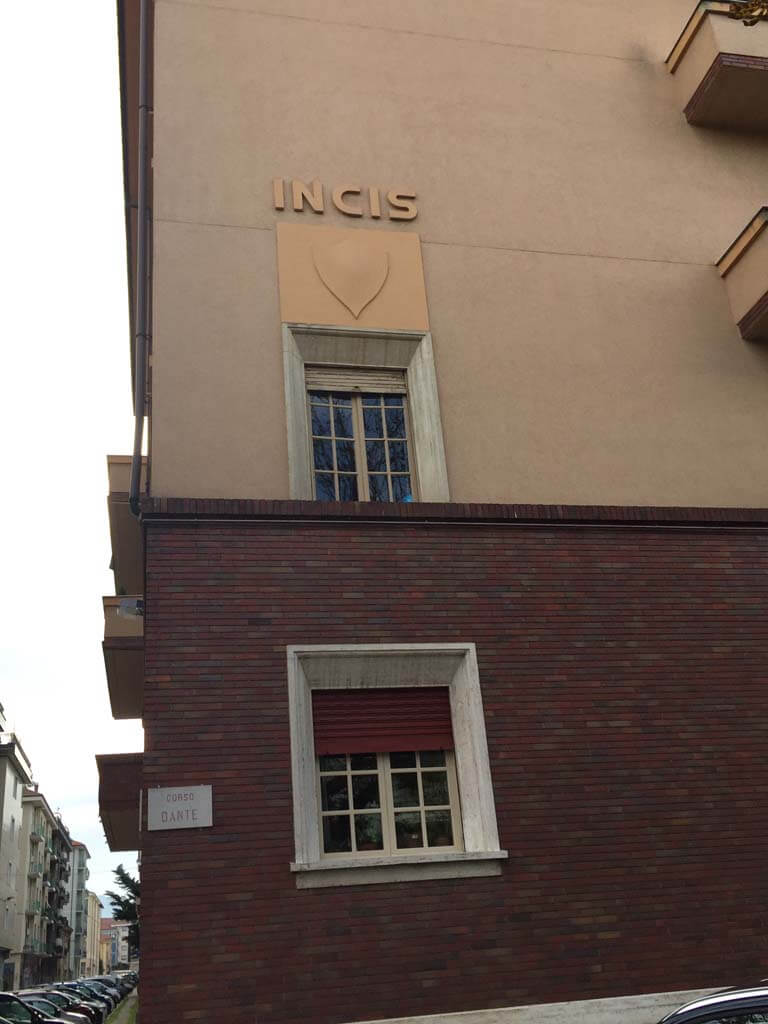Air-raid shelters - High School Gymnasium and other sites
In Italy antiaircraft defence had been organized since 1934, yet during the
war it was hardly ever adopted. But after the town had been subjected to
bomb raids some safe places for civilians were to be found. In fact, on 12th
May 1940, all Prefectures were sent a secret notice ordering them to
complete the building of air-raid shelters for civilians. Those built in the town
could accommodate up to 1,470 people for a population of 35,000 in 1940.
Out of eight public air-raid shelters in Cuneo that were accessible in case of
bombing attacks, only three of them were considered to be “rather safe”,
because they were built in reinforced concrete. They were situated at 3, Via
Peano, in”Palazzo del Governo”, at 11, Corso Giolitti, in “Liceo Ginnasio” – a
secondary school specialising in classical studies – and on the corner of
Corso Nizza and Corso Dante in INPS – the social security service.
During the war, all air-raid shelters had been clearly marked with a large “R” -
the initial of the Italian word for shelter -, followed by the number of people
that could be held in it. For example, on the main front door at 18, Corso
Nizza, you can still read “R posti n. 50”, which indicated that in the basement
there was an air-raid shelter that could accommodate up to 50 people. In
many apartment blocks shelters were set up in cellars, which had been
shored up with planks and beams.
At the beginning of the conflict, an order stated that every basement in Via
Roma was to be emptied and made available to the Town Council, and all
entrances to bomb shelters were to be painted white so that they could easily
be seen.
Shelter wardens were soon appointed to check that they were suitable for
safeguarding civilians during air raids. They also had to make sure that all
basements and cellars were well-equipped, and that all appliances and
valves for water and gas had been shut off in the flats above.
These rules were not always respected though. Moreover basic sanitary
requirements could not always be met and the people hidden in the shelters
sometimes failed to be self-disciplined to the detriment of their safety.
In 1943 they started thinking about building an underground air-raid shelter
crossing the tableland on which Cuneo lies. The tunnel was to be used as a
public air-raid shelter against enemy attacks as bomb shelters for domestic
use were not fully bomb-proof. But the idea was soon abandoned as it would
have implied higher costs than just restoring and repairing pre-existing air-
raid shelters.
An anti-aircraft protection law was passed in 1939, which compelled all local
councils to take specific measures to protect the civil population from aerial
attacks. During the war emergency warning of enemy planes was given by
air-raid alarm systems, so three electromechanical sirens were installed on
the Town Hall, which was situated between Corso Stura and Corso Gesso.
Other sirens were placed on the Littoria Tower, at INCIS - Istituto Nazionale
per le Case degli Impiegati dello Stato, which provided houses for
government employees -, at the railway station and in the Church of
Sant’Antonio. They would all be replaced by the bell of the Civic Tower in the
event of malfunction.
Soon after the declaration of war on 10th June 1940, the War Ministry
imposed a partial blackout of the whole country. All householders had to paint
the remaining bulbs blue in order to stop any light showing through their
windows. To prevent crews of enemy aircraft from being able to identify their
targets by sight, all external lights such as street lights were dimmed or
shielded. Moreover all neon signs were forbidden and all shopkeepers had to
black out their doors and windows by hanging thick black or blue curtains.
After a total blackout had been imposed also in the town, the remaining bulbs
were dimmed even more while blue street lamps replaced the white ones, to
prevent any glimmer of light that might aid enemy aircraft. For the same
reason, night driving was also limited.
In Cuneo rescue teams were organized, who provided assistance in the four
areas in which the town had been divided, each corresponding to a single
Parish. A different siren was played to announce the end of an air raid and of
the blackout.
French air bombing attacks started in June 1940 and first hit the area
between the Church of Sacro Cuore and the railway station, while the Allied
Powers’ aerial bombing of Cuneo began in July 1944, right in the middle of
the armed resistance to the German occupation. Strategic bombing was then
designed to target railway stations, rail networks and bridges. Cuneo was hit
particularly hard on 28th August 1944, suffering 32 casualties in Corso
Kennedy – named Corso Stura at the time -, and on 11th February 1945, in
the area between Corso Gesso and Via Peveragno, when 20 inhabitants lost
their lives. The town endured 39 days of bombing. During the conflict the two
main railway lines to Ventimiglia-Nice and to Savona were severely damaged.




















